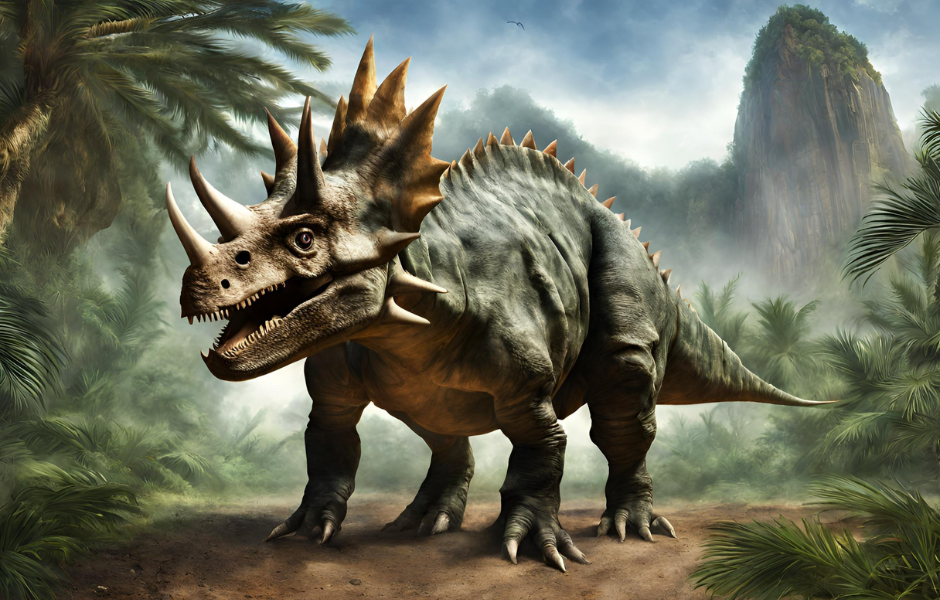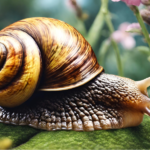
Styracosaurus was a species of herbivorous dinosaur that lived during the Late Cretaceous period which is approximately 75 million years ago. Known for its distinctive frill of spikes and a single horn on its nose, this dinosaur was a member of the Ceratopsidae family, which also included the much larger Triceratops. Styracosaurus had a relatively short lifespan. Despite this, it was a highly successful species with fossils found in many parts of North America. So, it is nothing surprising that a Styracosaurus figurine will be part of a kid’s toy dinosaur collection.
Papo Styracosaurus Figurine

#CommissionsEarned
The features of the Papo Styracosaurus figurine include:
- For children aged 3 and over
- Ultra-realistic with attention to detail
- Hand painted
- Approximately 5.4 inches long, 3.6 inches tall and 2.3 inches wide
10 Fun Facts On Styracosaurus
- Styracosaurus was a large dinosaur, growing up to 5.5 meters (18 feet) in length and weighing up to 2.7 tons.
- It had a distinctive frill around its neck with six long spikes protruding from it, as well as a single horn on its nose and four smaller horns above its eyes.
- The name Styracosaurus means “spiked lizard”, which is a reference to the horns and frill.
- Styracosaurus lived during the late Cretaceous period, alongside other famous dinosaurs like Tyrannosaurus rex and Triceratops.
- It was discovered in Alberta, Canada, by paleontologist Lawrence Lambe in 1913.
- Scientists believe that the frill and spikes of Styracosaurus were used for display purposes, to attract mates or intimidate rivals.
- Styracosaurus was an herbivore and likely fed on low-lying vegetation like ferns and cycads.
- It is estimated that Styracosaurus had a top speed of around 32 km/h (20 mph).
- Some paleontologists believe that Styracosaurus may have lived in herds, based on the discovery of multiple individuals in the same area.
- Styracosaurus is a popular subject in popular culture, appearing in movies, video games, and other media.
PNSO Prehistoric Dinosaur Model

#CommissionsEarned
The features of the PNSO The Styracosaurus replica include:
- Made of soft plastics which are safe and harmless
- High detailed, realistic and exquisite
- Suitable for 14 years and up
- Measures roughly 12 x 8 x 6 inches
Was A Styracosaurus A Predator Or Prey?
Styracosaurus was not a meat eater. Its sharp beak was adapted for cutting and grinding tough plant material which indicates that it was a pure herbivore and did not hunt or scavenge for meat.
As a herbivore, Styracosaurus fed on plants such as ferns, cycads, and conifers. It probably used its sharp beak to nip off vegetation and its powerful jaws and teeth to grind it up. While Styracosaurus had some defensive features, such as its frill and horns, it was not a predator and would have been preyed upon by larger carnivorous dinosaurs like Tyrannosaurus Rex.
Location
While Styracosaurus fossils have been found in various locations throughout North America, the majority have been discovered in the western United States and Canada. One of the most famous locations for them is Dinosaur Provincial Park in Alberta, Canada which is known for its high concentration of dinosaur fossils, including those of Styracosaurus. Other notable locations include Montana, Utah, and Wyoming in the United States.
Fossils of Styracosaurus have also been found in parts of Asia, such as China and Mongolia. This suggests that Styracosaurus may have had a wide geographic range during its time on Earth.
What Did Styracosaurus Look Like?
As mentioned above, Styracosaurus measured up to 18 feet long and weighed close to 3 tons. It has six long spikes that protruded from the back of its skull, a horn on its nose and two smaller ones above its eyes. Its body was covered in bony plates called osteoderms which may have provided some protection from predators. While Daeodon had similarities to a pig, the arrangement of the horns and frill gave Styracosaurus a striking resemblance to a modern-day rhinoceros although it is not closely related to them.
In terms of color, it is difficult to know exactly what color Styracosaurus was since we don’t have any living specimens to observe. However, paleontologists can make educated guesses based on the coloration of modern animals with similar lifestyles and habitats.
Since Styracosaurus lived in the Late Cretaceous period and was a herbivorous dinosaur, it is possible that it had a greenish-brown or grayish-brown hue. This would help it blend in with its surroundings which would make it harder for predators to spot. Some experts also think that Styracosaurus may have had colorful patterns or markings on its skin that was possibly used for display or to identify members of its own species.

#CommissionsEarmed



Leave a Reply